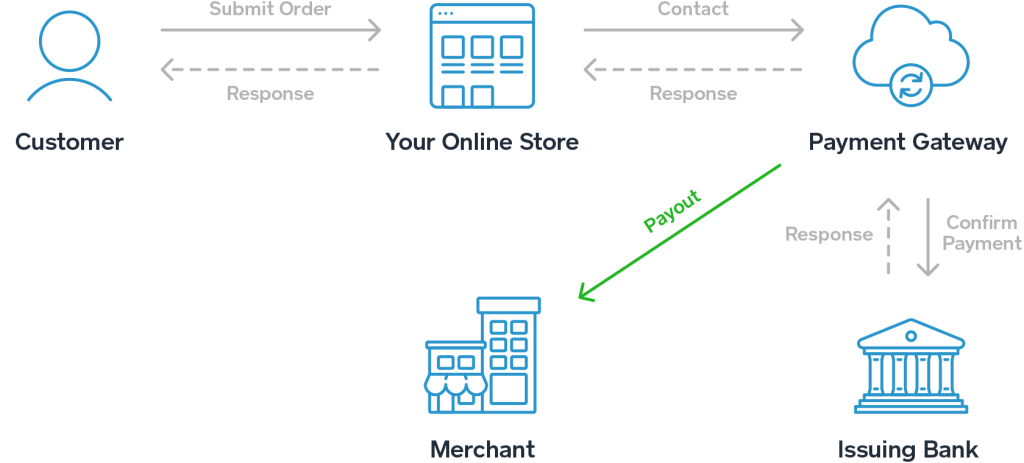What Is a Payment Gateway
A payment gateway that aims to create a secure link between an eCommerce site and the processor. It’s basically a channel through which the transaction details that is being transferred to a payment processing.
It’s the tech layer that helps merchants receive payments from their clients by encrypting sensitive card data and verifying its authenticity.
These are usually third-party payment processors and can be used for transactions at physical stores or online marketplaces.
Payment gateway performs the important role in processing and authorizing the payment or transactions between customer and merchants.
Payment gateways encrypt sensitive information and details of payment such as credit cards number. It is to guarantee that the information is passed securely between customer and merchant.
Payment Gateway Transaction Process
Now, this is how the whole transaction process follows:
- When the customer places an order and presses the checkout button on the website, the website or the e-commerce platform takes the customer to a payment gateway where users enter all the card informations about the bank or the card they are using to pay.
- Later, it takes the user directly to the page of the issuing bank or a 3D secure page, asking for the transaction to be authorized.
- After the the payment gateway approves the transaction, the bank then checks whether the customer has sufficient balance in the account to make this transaction a success or not.
- Soon after that, the payment gateway sends a message to the merchant accordingly. There’s two outcomes of this:
- If the bank reply is a “No'”, then the merchant subsequently sends an error message to the customer, telling them about the issue with the card or the bank account.
- If the bank reply is a “Yes” from the bank portal, then the merchant seeks the transaction from the bank.
- Lastly, The bank settles the money with the payment gateway, which in turn settles the money with the merchant.
How Does a Payment Gateway work

- Step 1: A customer will place an order on the website that they visit by submitting the order, checkout from the cart or any equivalent button.
- Step 2: Merchant securely transfers order information to the payment gateway. Customer will pay with their preferred payment method. The transaction is then routed to the issuing bank or the 3D secure page to request transaction authentication.
- Step 3: After the authentication process is successful, the transaction is then authorized or declined (depending on funds available in the customer’s account) by the issuing bank or card (VISA, MASTER, MAESTRO, American Express).
- Step 4: Payment gateway sends a message to the merchant accordingly.
- Step 5: The bank settles the money with the payment gateway and then the payment gateway settles the money to the merchant.
When using payment gateways, there are three important things that they do when customer wants to make purchase from the merchants’ website. It is either by using credit card, debit card, Online Banking, Cash etc. The three important things are including authorization, settlement and reporting.
Payment gateway providers also provide merchants with other benefits such as virtual terminal that can help receiving payment in the physical outlets through the same methods of payment.
By using a payment gateway, it puts the control of business payment acceptance into your hands hence raising the power to grow business right through your fingertips.

